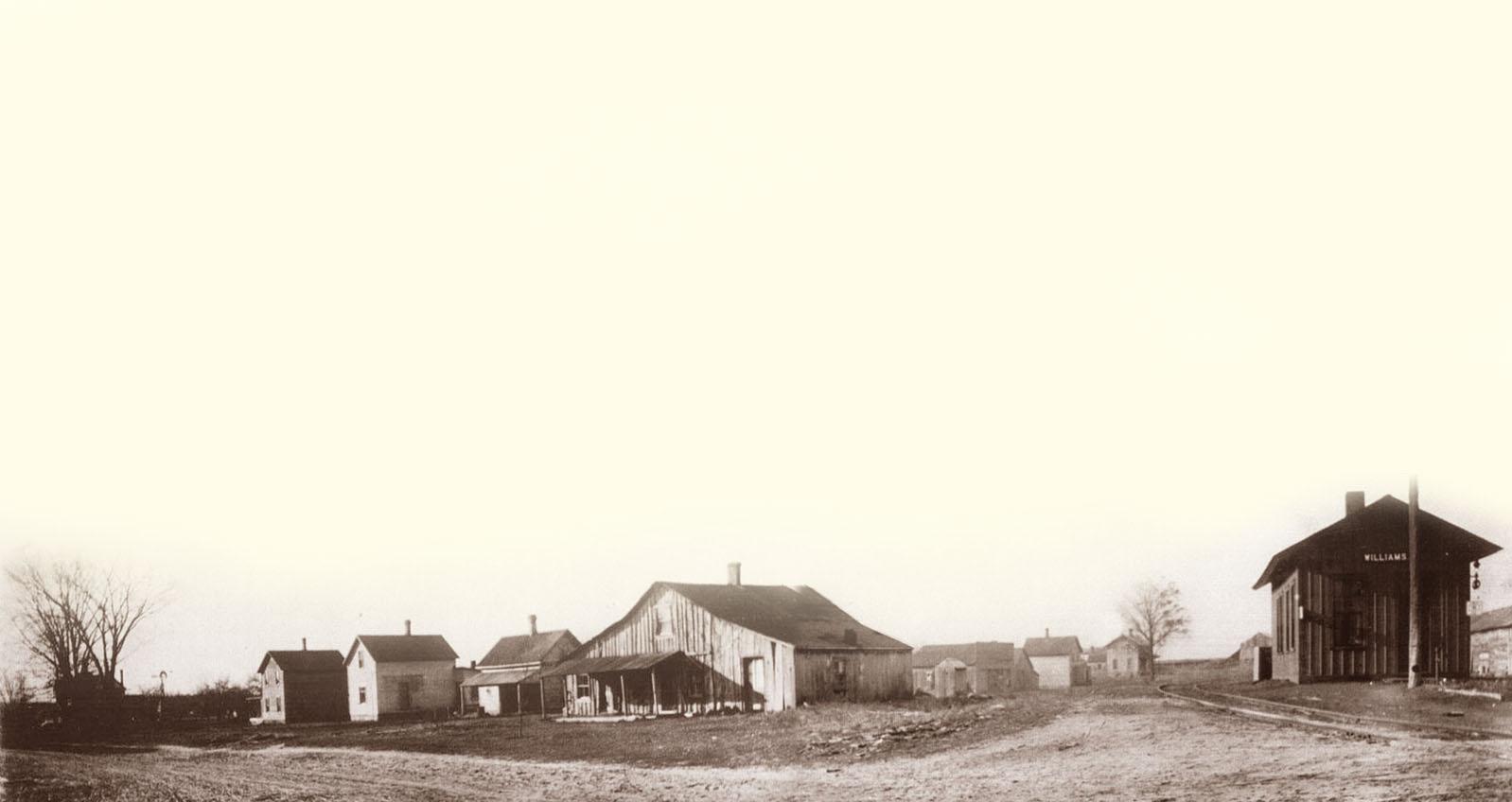
2 minute read
History: Ghost Town
on the Kalamazoo & South Haven Line GHOST TOWN
by Keith Howard, Kalamazoo Public Library
Advertisement
The town known as Williams Station once stood in northwestern Kalamazoo County where the Kal-Haven Trail crosses North 2nd Street. It’s a ghost town now but just over a century ago, Williams was a busy rail stop along the Kalamazoo & South Haven Railroad line with more than a hundred residents and several thriving businesses.
The swamps near Williams were once rich in high quality timber. Lumber milled in Williams was shipped eastward by rail into Kalamazoo and west to ports along Lake Michigan, where it was loaded onto boats destined for Chicago and beyond. Tamarack from Williams was used to pave streets in Kalamazoo, while loads of white oak and ash were shipped to Boston and elsewhere to make high quality railroad ties. Massive logs cut from the swamps near Williams were shipped to New York City where they were used to build boat docks in New York Harbor.
Natural clay was also abundant in the area near Williams. During the fi nal quarter of the 19th century, Peter Dobbin manufactured handmade “slop” bricks near the creek on his farm south of EF Avenue and shipped them out of Williams by rail. His operation turned out roughly 7,500 bricks a day for nearly a decade.
Patrick Shields later made dry-pressed brick in Williams with the aid of horses. A new steam engine doubled his production, allowing his 15 workers to make up to 20,000 bricks a day. The high iron content gave the bricks a rich reddish-brown color when fi red. Bricks from the various brickmaking operations in Williams were used to build homes and businesses from Grand Rapids to Dowagiac, including several buildings in Kalamazoo.
During the 19th and early 20th centuries, wooden barrels were the standard for shipping and storing everything from whiskey to hardware. The barrels themselves were made by coopers (barrel makers), but the individual parts (staves, iron hoops, and tops) were often made by separate companies. The Williams Hoop and Heading Company was one such operation that employed more than 60 workers at one point. The company saw great success for several years by making high quality barrel parts and shipping them to coopers around the country.
By the turn of the 20th century Williams had reached its peak with 125 residents. During the years that followed, several factors contributed to the community’s economic downturn. As lumber in the area became scarce production slowed, and workers sought employment elsewhere. The sawmill was dismantled and the brickmakers closed. By 1910, only a few farmers and railroad workers were left.
Rail service on Michigan Central’s South Haven Division declined sharply after 1930. Passenger service on the line through Williams ceased in 1937 and the line was eventually abandoned. The last remaining business in Williams was Glen Henry’s grocery store, which survived until the early 1950s. A sign on the KalHaven Trail now commemorates this once thriving industrial town.
More at kpl.gov











